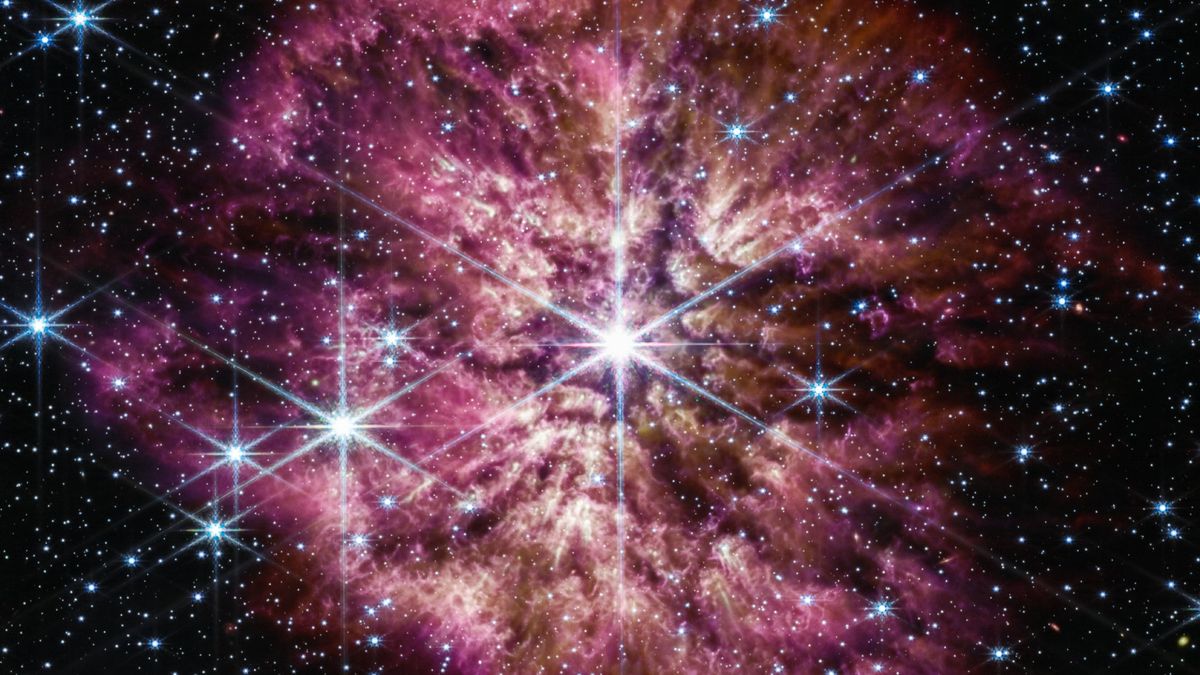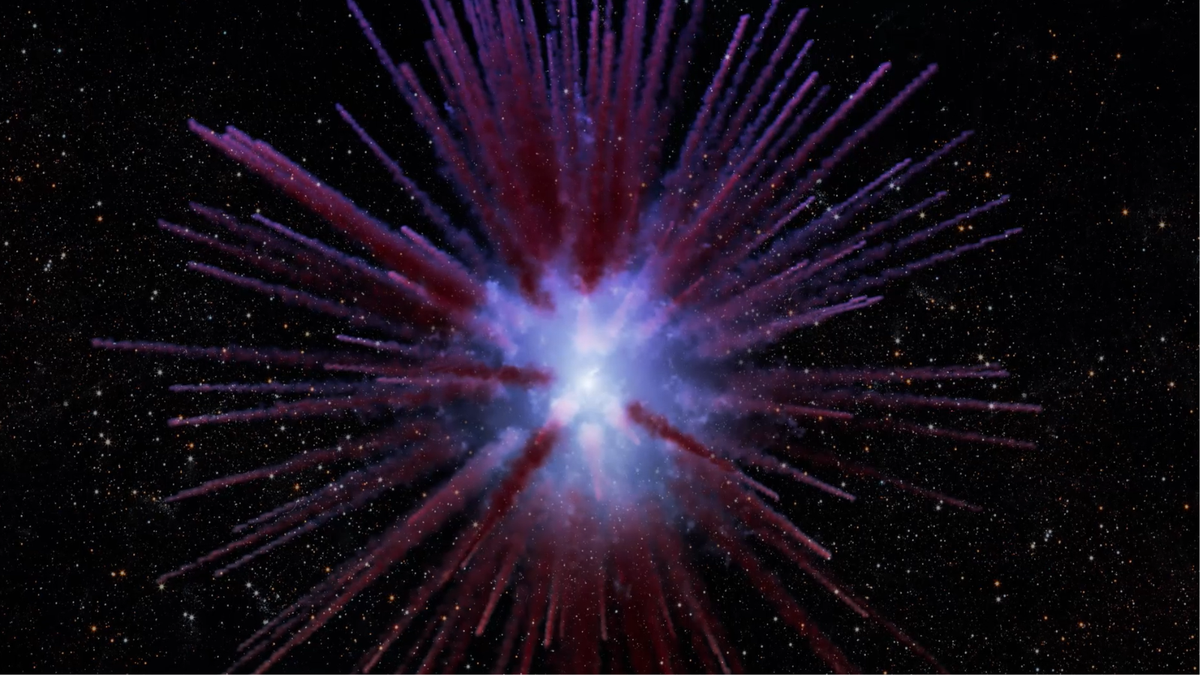Every star ages, but astronomers rarely get to watch it happen in real time. Now, they’ve gotten a front-row seat to the aging of an unusually chaotic star — and found that it’s headed toward a spectacularly violent death.
The star, located in the nearby Triangulum galaxy (also known as Messier 33), is in the middle of a transition into a class of highly unstable stars called Wolf-Rayet stars. New observations show that the star has begun beaming a new signal that was not seen when the star was first spotted in 2018.
The new signal was detected in the peaks and valleys of the star’s spectra, the wavelengths of the electromagnetic radiation it emits, and shows that the star is churning either carbon or iron deep within it through nuclear fusion. The new signal also indicates that the massive star, easily 25 times the sun’s mass, has inched closer to its eventual fate of exploding into a spectacular supernova.
Related: James Webb Space Telescope spots huge star about to go supernova (video, photos)
“It’s really interesting that we have been able to see an actual change in the spectrum of the object in just four years,” Olivia Gaunt, a graduate student at Tufts University in Massachusetts who is part of the new research, said Tuesday (June 6) while sharing the findings at the 242nd meeting of the American Astronomical Society, which is being held in Albuquerque, New Mexico, and online. “We believe this might be the first observation of a Wolf-Rayet star evolving in real time.”
Gaunt’s team is calling the star BELLS 1, an acronym for “broad emission-lined luminous sources, the kind of wide range of emissions radiated by Wolf-Rayet stars.
BELLS 1 probably began as a hot and massive star and rapidly lost its hydrogen reservoir by combining lighter elements into heavier ones through nuclear fusion. The rich spectra detected by Gaunt’s team comes because of BELLS 1’s furious winds, which blast out at 2.2 million to 5.4 million mph (3.5 million to 8.7 million km/h) and shed about 10 solar masses’ worth of star matter every million years or so. The discarded stellar material is pumped back into the nearby universe, where it triggers the formation of future generations of stars and enriches them with recycled elements.
When the team first observed BELLS 1 in 2018 using the Keck Observatory perched atop Mauna Kea volcano in Hawaii, the star featured three emission lines. But during their follow-up observations in 2022, BELLS 1 sported a new emission line, hinting that it took a step further in its short and energetic evolution. Shining with the light of millions of suns, BELLS 1 is now closer to the end of its 10 million-year lifetime. Once the star completely runs out of fuel, it will explode into what astronomers call a Type I supernova.
The new observations are exciting but not entirely surprising. “We do know that they exist on short timescales, so we expect to see rapid changes,” Gaunt said at the news conference on Tuesday.
According to NASA, Wolf-Rayet stars like BELLS 1 live fast and die hard, so watching one evolve is a rare and valuable opportunity for astronomers. Only 200 such stars are known to be in the Milky Way galaxy. Astronomers suspect that 1,000 or 2,000 more may be out there but are obscured by thick blankets of dust.
Meanwhile, BELLS 1 is offering a bright performance, literally.














